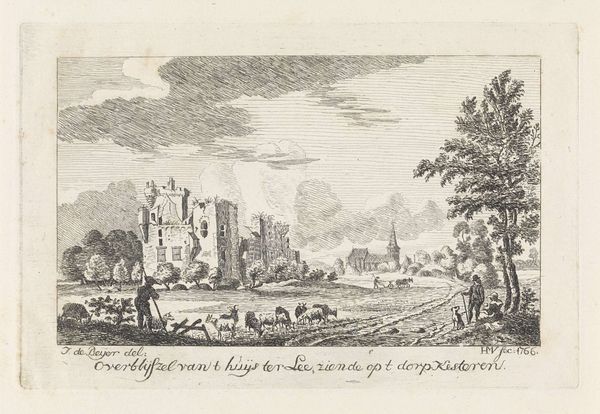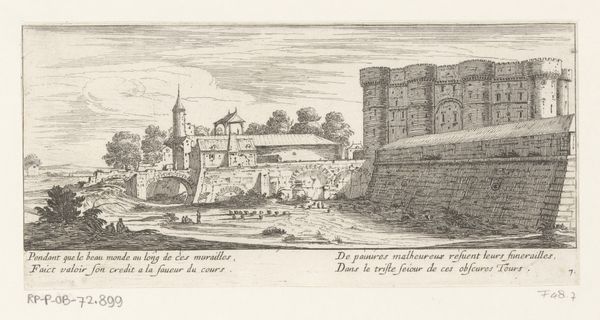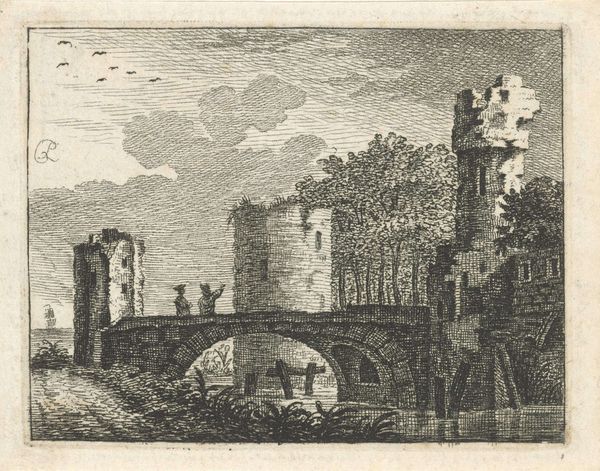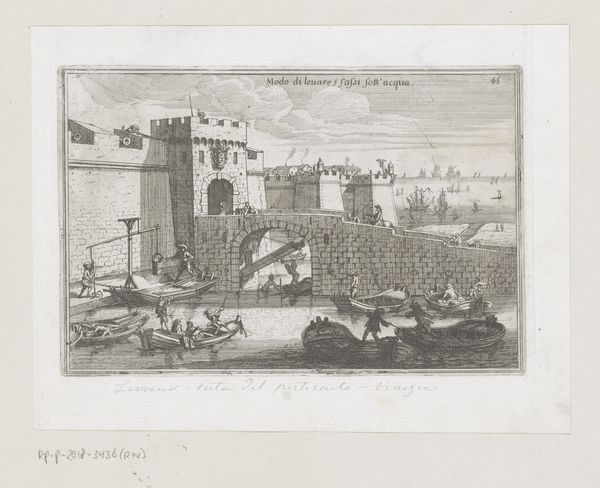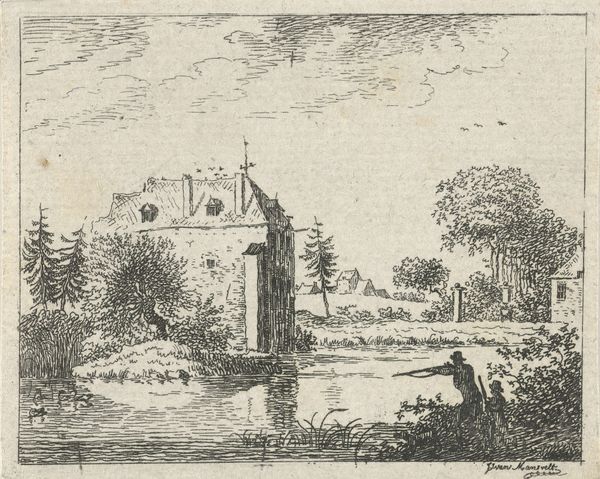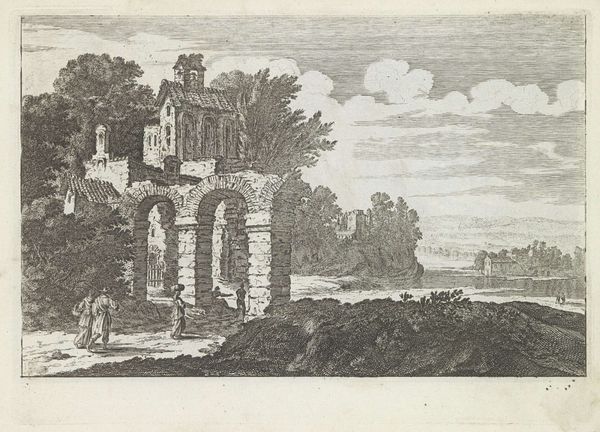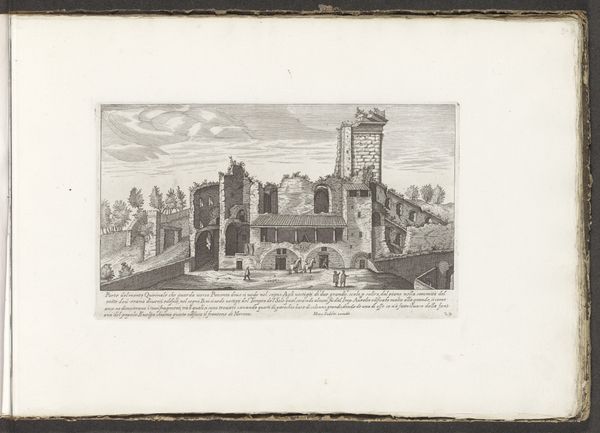
#
aged paper
#
pencil sketch
#
old engraving style
#
sketch book
#
personal sketchbook
#
sketchwork
#
pen-ink sketch
#
pen work
#
sketchbook drawing
#
storyboard and sketchbook work
Dimensions: height 83 mm, width 110 mm
Copyright: Rijks Museum: Open Domain
Curator: This is a delicate, detailed image attributed to Abraham Rademaker, dating sometime between 1725 and 1803, held here at the Rijksmuseum. It’s titled, "Gezicht op een deel van de stadwal te Utrecht, 1660"—a view of a section of the city wall of Utrecht. Editor: The image feels almost ghostly. There’s a faded quality that gives it an incredible sense of distance, both in time and in space. I'm also struck by how it appears to show a fortified structure being observed, watched over. Curator: Rademaker was known for his topographical drawings and prints, and his style frequently emphasized precise documentation of landscapes and urban spaces. It’s interesting how the details are carefully rendered, despite the softness of the line work. We're really given an excellent glimpse into this specific moment in Utrecht's past. Notice the way the artist captures light reflecting off the water. Editor: It certainly reflects an age where boundaries, literally walls, determined so much about the accessibility to power. We might reflect on who this fortified place was designed to protect and keep safe, and also conversely who it was built to keep *out.* The structure itself feels almost like a physical embodiment of social hierarchy, and perhaps Rademaker provides some critical observation. Curator: The walls definitely create a division and speaks to the urban development strategies in the region. I think it's less about critical reflection and more a capturing of a period. But perhaps our own positioning allows us to interpret them now through the lenses of class and safety you rightly bring to bear. And there's also a cultural memory at play here – how do walls shape the consciousness of people living within and outside of them? Editor: It’s fascinating how such a simple scene evokes those much bigger questions. A seemingly neutral depiction of a landscape still speaks volumes about its socio-political conditions and even carries forward symbolism into our present-day contexts. Thank you. Curator: Thank you.
Comments
No comments
Be the first to comment and join the conversation on the ultimate creative platform.



